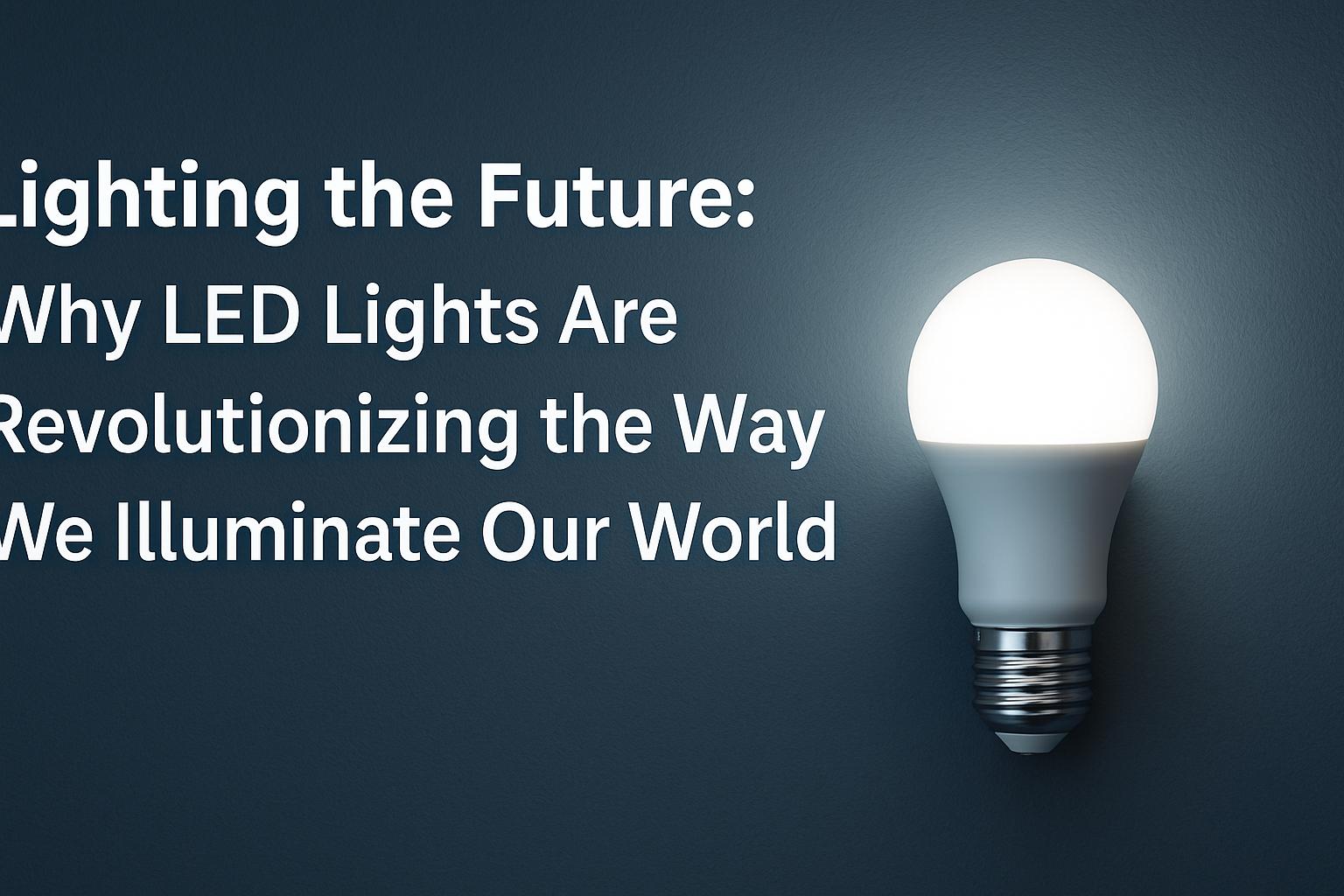Lighting the Future: Why LED Lights Are Revolutionizing the Way We Illuminate Our World

In the world of modern lighting, few innovations have had as profound an impact as LED (Light Emitting Diode) technology. Once considered a futuristic novelty, LED lights have become a mainstream solution across homes, businesses, cities, and even space exploration. Their rise isn’t just due to improved brightness or durability—LEDs represent a seismic shift in how we approach energy efficiency, sustainability, and smart living. This blog explores the transformative power of LED lighting and why it is paving the way for a brighter, greener future.
What Are LED Lights?
LEDs are semiconductor devices that emit light when an electric current passes through them. Unlike traditional incandescent bulbs, which rely on heating a filament, or fluorescent lamps that use gas and mercury vapor, LEDs generate light through electroluminescence—a much more efficient and cleaner process.
The core structure of an LED is incredibly compact, making it versatile and easily integrated into various fixtures and forms. From miniature indicator lights to massive stadium illuminations, LEDs come in all shapes and brightness levels.
The Advantages of LED Lighting
1. Energy Efficiency
One of the biggest selling points of LED lights is their unparalleled energy efficiency. They consume up to 80% less electricity than traditional incandescent bulbs and significantly less than compact fluorescents (CFLs). This translates to lower utility bills and reduced demand on power plants, which in turn leads to a decrease in greenhouse gas emissions.
2. Longevity
LEDs boast an exceptional lifespan, often lasting 25,000 to 50,000 hours or more. For comparison, incandescent bulbs usually last around 1,000 hours and CFLs around 8,000. This means less frequent replacements, reducing maintenance costs and landfill waste.
3. Environmental Impact
LEDs contain no toxic elements like mercury, which is found in CFLs. Their longer lifespan also means fewer lights are discarded, contributing to lower environmental pollution. Many LED products are now manufactured with recyclable materials, further reducing their ecological footprint.
4. Durability
Built with solid-state components, LEDs are more resistant to shocks, vibrations, and external impacts. They’re perfect for outdoor settings, rough environments, and places prone to fluctuating temperatures.
5. Design Flexibility
LEDs come in an array of color temperatures and brightness levels, enabling tailored lighting environments—from warm, cozy home lighting to bright, white light suitable for workplaces. They also support features like dimming and color tuning, allowing for dynamic ambiance control.
Applications Across Industries
The versatility of LED technology means it has penetrated a wide range of sectors:
-
Residential Lighting: Replacing traditional bulbs in homes for better efficiency and cost savings.
-
Commercial and Industrial: Warehouses, offices, and factories use LEDs to reduce overhead and improve productivity.
-
Street and Traffic Lights: Municipalities adopt LEDs for streetlights due to their reliability and low maintenance.
-
Automotive: Car manufacturers use LEDs in headlights, tail lights, and interior lighting for their efficiency and sharp aesthetics.
-
Entertainment and Architecture: Dynamic color control in stage lighting and architectural accents makes LEDs ideal for design and creativity.
-
Healthcare and Agriculture: LEDs are used in phototherapy, plant growth systems, and germicidal applications due to their precision and low heat output.
LED Lighting and Smart Technology
With the rise of the Internet of Things (IoT), LEDs are playing a central role in smart lighting systems. Smart LEDs can be controlled via mobile apps, voice commands, or automated schedules. Features such as motion sensing, daylight harvesting, and integration with virtual assistants (like Alexa or Google Assistant) make them indispensable in smart homes and offices.
In cities, smart LED streetlights can adjust brightness based on traffic patterns or detect failures remotely. This creates safer, more efficient urban environments while significantly reducing energy consumption and maintenance costs.
The Cost Factor: Are LEDs Worth the Investment?
While LED bulbs are generally more expensive upfront than incandescent or CFL counterparts, the cost difference has shrunk dramatically over the years. When you factor in the energy savings, reduced maintenance, and longer lifespan, LEDs prove to be far more cost-effective over time.
Government rebates and energy-efficiency incentives also make LED transitions more affordable for both individuals and businesses. Some countries and states are even mandating LED adoption in certain settings to promote sustainability.
Environmental and Economic Impact
Globally, the widespread adoption of LED lighting has already led to significant reductions in energy use and carbon emissions. According to the International Energy Agency (IEA), LED lighting could cut global electricity consumption for lighting in half by 2030. This potential aligns with international climate goals and helps utilities better manage their energy grids.
The LED industry itself has created jobs and economic opportunities in manufacturing, R&D, installation, and maintenance sectors. Innovation continues to thrive, with research pushing boundaries in organic LEDs (OLEDs), micro-LEDs, and quantum dot technology.
Challenges and Future Outlook
While LEDs offer many benefits, challenges remain. Quality varies across manufacturers, and poorly designed LEDs can flicker, produce harsh light, or fail prematurely. Consumers should look for certified products (like ENERGY STAR ratings) to ensure quality.
Looking forward, advancements in LED technology are driving even greater efficiencies, miniaturization, and integration with AI and sensors. We can expect lighting systems that respond to our moods, enhance productivity, and adapt to the environment in real time.
Conclusion: A Bright Path Forward
LED lights are not just a replacement for outdated lighting—they are a leap forward in how we think about illumination, energy use, and environmental responsibility. Whether you’re a homeowner looking to cut utility bills, a business seeking better lighting solutions, or a city planner aiming for smarter infrastructure, LEDs offer a compelling answer.
As technology continues to evolve and sustainability becomes more urgent, LED lighting stands at the forefront of innovation—lighting the way toward a cleaner, more intelligent world.




